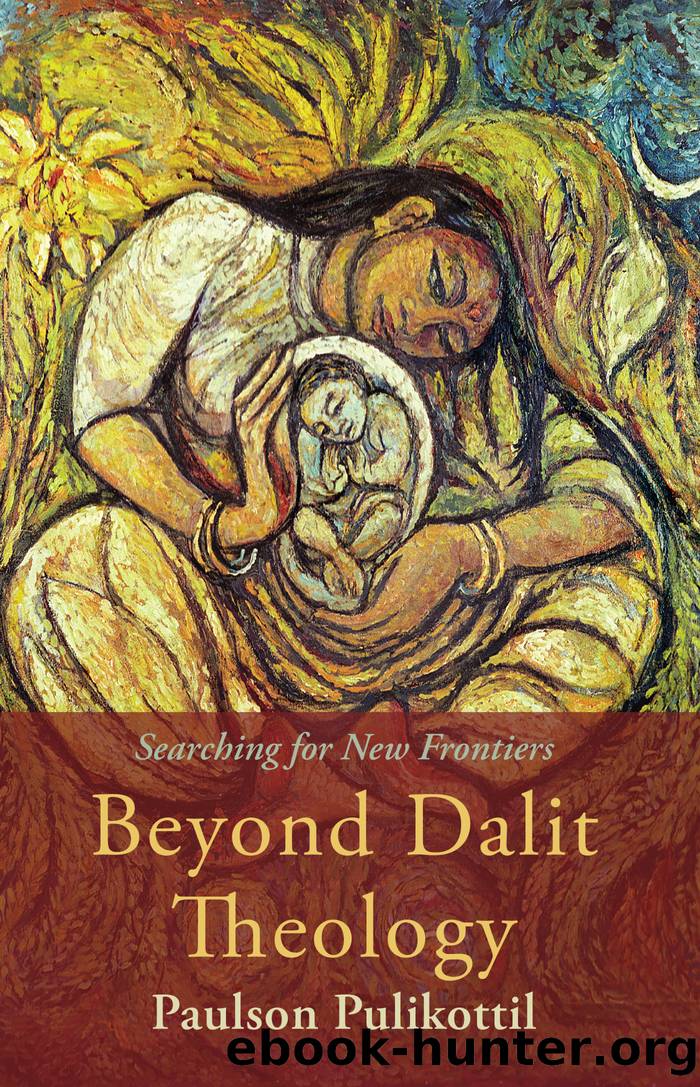Beyond Dalit Theology by Paulson Pulikottil

Author:Paulson Pulikottil [Pulikottil, Paulson]
Language: eng
Format: epub
Tags: REL067000 Religion / Christian Theology / General, REL102000 Religion / Theology, REL067120 Religion / Christian Theology / Liberation
Publisher: Fortress Press
Case 2: The Battle against Caste in the Church
Caste in the Indian society is something that the church in India did not challenge but rather accommodated. The history of caste in the church and the churchâs toleration of it speaks volumes about the culpability of the church in India and its social irresponsibility. The Indian church failed to be an agent of liberation on two fronts regarding the caste system, which is the root of all social evils and inequalities in Indian society. First, it failed in its obligation to be an agent of transformation to fight this evil in society, unlike non-Christian social reformers like Phule, Ambedkar, Gandhi, and others. Second, it also failed to eliminate caste practices within its own walls, failing miserably in providing justice, equality, and dignity to converts from lower castes who came under its wings.
Before the European missionary enterprise in India, the Indian church, being homogeneous, was rather immune to caste discrimination. For example, the ancient Christians of the present Kerala state were accorded the status of âhigh casteâ by the local rulers. Since this Christian community was endogamous and less zealous in its missionary activity, it did not have to face the issues of caste. In a similar manner, the Roman Catholic mission before the arrival of Roberto de Nobili (1577â1656) was exclusively among the fishermen. So caste discrimination was not an issue for the churches.
Caste issues raised their ugly head when the church became heterogeneous as conversions through European missionary efforts began. The European missions converted people from various lower as well as higher castes, resulting in heterogeneous churches. The missionary churches were either exclusively among the lower castes or in mixed groups where high-caste Christians dominated. Wherever two different castes came into close proximity as members of the same congregation, caste discrimination showed up.
Since the mixed congregations were hindrances to conversion from high castes, the European missionaries tried to accommodate the caste sensitivities of the local people. One method was inculturation by adapting high-caste practices in the church to make the Christian faith acceptable to the high castes. The second issues from the first by segregating the congregations according to caste to maintain homogeneity.
The pioneer of the inculturation method is indisputably Roberto de Nobili, who adapted Hindu customs to reach out to high-caste Hindus. Upon his arrival as a missionary in India in 1605, he realized that the high-caste Hindus considered the Portuguese customs offensive.18 In order to make Christianity more acceptable to high-caste Hindus, he introduced caste practices into the church. In the process, he identified himself with the Brahmins and practiced caste by dissociating with the lower castes. Though de Nobili was uncompromising on doctrinal matters, he allowed the high-caste converts to maintain their social practices.19 De Nobiliâs mission in Madurai promoted the idea of separate churches for separate castes to keep the low castes away from the high-caste converts. He was keen to keep the congregations homogeneous to avoid caste conflicts.
The Catholic Church reproduced caste structures within itself.
Download
This site does not store any files on its server. We only index and link to content provided by other sites. Please contact the content providers to delete copyright contents if any and email us, we'll remove relevant links or contents immediately.
The Hatha Yoga Pradipika (Translated) by Svatmarama(2498)
Real Sex by Lauren F. Winner(2481)
The Holy Spirit by Billy Graham(2425)
The Secret Power of Speaking God's Word by Joyce Meyer(2257)
The Gnostic Gospels by Pagels Elaine(2034)
Devil, The by Almond Philip C(1906)
23:27 by H. L. Roberts(1895)
Jesus by Paul Johnson(1892)
The Nativity by Geza Vermes(1853)
All Things New by John Eldredge(1786)
Chosen by God by R. C. Sproul(1766)
Angels of God: The Bible, the Church and the Heavenly Hosts by Mike Aquilina(1630)
The Return of the Gods by Erich von Daniken(1578)
Angels by Billy Graham(1555)
Evidence of the Afterlife by Jeffrey Long(1463)
Knowing God by J.I. Packer(1436)
The Gnostic Gospel of St. Thomas by Tau Malachi(1414)
Victorian Sensation by James A. Secord(1410)
How To Be Born Again by Billy Graham(1407)
